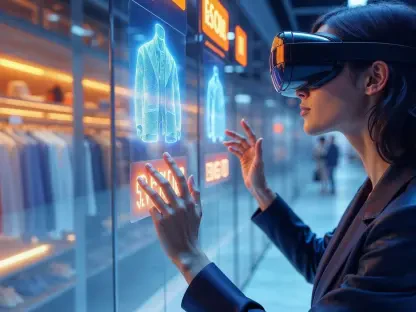Global retail sales have never been better, according to Statista. Compared to the 26.4 trillion USD sales in 2021, they should reach approximately 32.8 trillion US dollars by 2026. It is a turbulent market where consumer preferences shift daily, and the competition never sleeps. No wonder retailers are constantly searching for new tools, easier scaling, and process optimization, trying to stay ahead of the curve.
Retail Under Pressure
Even before the pandemic, online stores and e-commerce have become disruptive global economic forces. That trend only solidified during COVID. Because people had to stay home as much as possible, e-commerce was their window to the world. Online shopping options became a requirement rather than a mere option for retailers. However, right now, retail is feeling the heat.
The market is squeezing retailers from all sides:
- Handling online orders costs more.
- Suppliers demand more money due to rising material prices.
- Competition is dictating increasing investments.
- Customers demand exceptional and fast service.
- Hiring is becoming more expensive.
But, like with just about anything, there is a solution for these margin pressures. According to research by the McKinsey Global Institute, machines could replace almost half of retail’s time-to-market processes right now. But don’t panic just yet. MGI assures us that automation won’t cause massive layoffs. People will still have to work alongside machines to monitor and operate them if companies want to achieve the desired profits.
The research predicts AI will displace workers, but not to their detriment. The market will require new skill sets, so those who prequalify will quickly find new employment. It is important to note that such a shift in the labor force has happened before. In the US, people have moved away from agriculture and manufacturing jobs to create new types of work. Machines could entirely replace just five percent of the workforce at the moment. Additionally, investing in automation will create new job opportunities.
Understanding Retail Automation
Automation facilitates inventory management, order fulfillment, and even customer engagement. It is that factor X that allows businesses to stay ahead of evolving consumer demands.
1. Optimized Resource Allocation
When a business automates routine tasks and workflows, there are fewer manual errors and shorter processing times. Not to mention that optimizing how a company spends resources saves money.
2. Precise Customer Service
In an era of instant gratification, exceptional customer service is proving to be more and more challenging. Shoppers want a delivery system that is fast, free, and full of options. Such demands require round-the-clock ideation and implementation from retailers, some already struggling to keep up. A polished customer experience that nurtures loyalty and lightning-speed delivery are no longer possible without automation. That is where AI-powered chatbots and website crawlers customizing your shopping recommendations come in.
3. Reducing Costs
Automating repetitive tasks optimizes workflows and reduces operational costs for retailers. Those who invest in automation now will maximize the value of their resources and get a multifold return on their investment later. With automation, greater profitability is on the horizon. AI promises a hiccup-free inventory management system, one-click billing, and predictive analytics—all critical tools in today’s competitive marketplace.
6 Companies Harnessing the Power of Automation in the Retail Industry
1. The Feed
The Feed, a sports nutrition retailer from Colorado, has led the way to humanless warehouses. They employed Brightpicker robots to fulfill 5,000 orders per day and manage inventory. The automatons run the production line seamlessly, overriding the human error factor. Without the need for manpower to run the facility, there are no onboarding, training, overseeing, hiring, and managing costs to worry about.
2. Amazon Go
Amazon Go is a trailblazer in the retail landscape. Their new, checkout-free stores bring them one step closer to frictionless shopping. AI-powered self-checkout registers eliminate long, boring checkout lines and maximize the convenience of their customers.
3. Mobile Industrial Robots
Manufacturers in various industries and healthcare, such as Dr.Max, use MIR’s collaborative robots to automate their warehouse operations. MIR says their autonomous robots pay for themselves within a year.
4. Zebra
Zebra recently completed a study that showed retailers mostly lose in-store sales to online shopping because of out-of-stock items. They came up with an AI-powered machine, SmartSight, to solve this problem. Their robot uses computer vision, machine learning, and mobile robots to identify out-of-stock items. Zebra promises a quick payoff on their invention that increases shoppers’ basket sizes and makes sure shops monitor and optimize their inventories without a hitch.
5. Nuro
Nuro recently launched the third generation of their driverless pods. The self-driving vehicles boast doubled capacity for various cargo types. In the past year, Nuro forged partnerships with Domino’s for pizza delivery in Houston and with FedEx for last-mile delivery within its facilities.
6. Walmart
Walmart has patented self-driving shopping carts. Mini robots operate carts that transport containers, scan, retrieve, and deliver products, check inventory, collect trash, and interact with customers. Walmart’s patent acknowledges robots as potential solutions to staffing, turnover, untidy aisles, and theft. Also, the hard-working robots don’t take vacations, get sick, or require training. And they never complain.
Retail Automation: Strategies for Success
1. Start Small, Scale Gradually
Test your automation plans using smaller pilot projects, gather feedback, and repeat. Iteration is the foundation of a successful automation strategy. Later, when you are comfortable with the results, start scaling up to more significant, critical projects.
2. Invest in Training and Support
Train your workforce with the necessary skills and knowledge to embrace automation. Invest in comprehensive training programs and always support your newly trained employees. Before the process can be fully automatic, ensure your team can effectively utilize their new tools.
3. Data Security and Compliance
Automation increasingly relies on data-driven technologies. Therefore, protecting sensitive customer information is paramount. Set up robust cybersecurity measures to industry best practices to safeguard your data and mitigate potential that might arise with automation.
Automation Beyond the Day-to-day Retail
It’s important to acknowledge that automation and AI will impact not only retail time-to market and physical stores. Smart supply chains also boost brand identity. Even merchandising can become smarter. In fact, machines are already capable of helping merchandisers plan what goods to stock, thus speeding up the planning process. Embracing the power of automation can even take care of pricing and promotions, giving merchandisers more time to focus on important decisions.
Another way to automate retail by proxy is HR. Better hiring processes support the entire enterprise, so why not utilize it to its fullest potential? For instance, one retailer had difficulties attracting high-quality applicants, so they developed an app. Before, candidates had to complete a lot of paperwork and go to the company’s offices multiple times, which was extremely tedious. Their hiring process also significantly decreased the chances of retaining new hires. But with the new app, candidates applied for jobs on their phones, and HR managers quickly found the right people. All in a few clicks. Hiring was quicker by over eighty percent. Their new hire retention numbers are up, along with the quality of the candidates, consequently elevating the entire company.
The Future of AI-powered Retail
It is difficult to say what the future brings for retailers. Brick-and-mortar shops could disappear completely to allow driverless vehicles and drones to deliver our goods. Food could appear in our microwaves or fridges with the push of a button. However, since retailers must satisfy the market and customers’ needs, we can expect to always have several shopping options. Either way, retail automation promises to redefine not only how businesses operate, but how we live. One-click same-day delivery? Check. A holographic visit to a bookstore on the other side of the world? You’ve got it. Finally, if it’s a sunny day, walk to your local grocery store with a friendly robot carrying your bags. Possibilities are genuinely endless.









